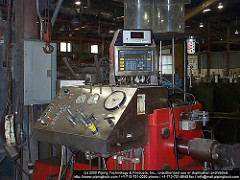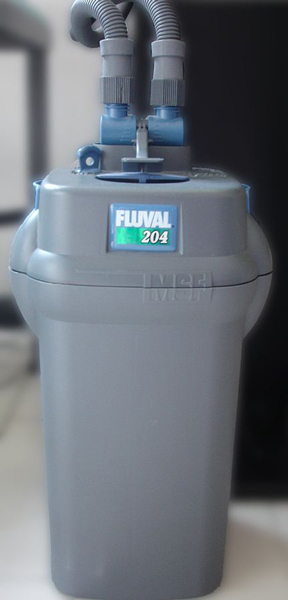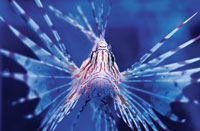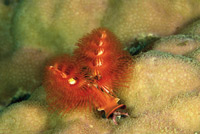
Q. I have a 30-gallon (tall) saltwater aquarium. Lighting consists of two 50/50 15-watt tubes in a dual fixture. I have about 30 to 35 pounds of live rock in the aquarium, and water circulation is controlled by one 402 Hagen powerhead. I'm also currently running a Visi-jet protein skimmer. The aquarium is home to one tomato invertebrate, one "percula" and one tomato clownfish.
My question is this: I've tried to revive my live rock by adding SeaChem's Reef Builder product to the aquarium at water changes (done monthly and changing about 5 to 7 gallons of water), but the red coralline algae never returns — the rock almost looks like base rock now. My tomato invertebrate is now white after a very warm summer (without a chiller), and even though it is now winter it has not regained its former color, and has not fully extended since. The pH is at 8.3, salinity is 1.024, and phosphates are between 0.5 and 0.8 ppm.
A. I think one of the answers to your problem lies in the phosphate level. A reading of 0.5 to 0.8 ppm (parts per million) is five to eight times higher than it should be. Coralline algae require calcium and carbonates in the water in order to calcify and grow. High levels of phosphate interfere with this process, and the coralline algae will cease to grow and will eventually die off.
Adding Reef Builder as you do, I suspect the alkalinity and calcium levels are too low. Adding this supplement only once a month is probably not adequate to maintain high enough calcium and alkalinity values. I strongly recommend that you purchase both alkalinity and calcium test kits so that you can find out what levels you have, and then use the Reef Builder product to raise and maintain them.
In the long run, however, I think you would be better off using one of the calcium hydroxide (kalkwasser) products available to maintain these parameters. The high pH of a kalkwasser solution will help to lower the phosphate level by binding with it, causing it to drop out of solution, while boosting calcium and alkalinity. I would also recommend upgrading your protein skimmer to a larger, more efficient, design, which will also help lower phosphates.
Although you do not mention if you have any substrate in the aquarium, I would recommend that you add a 1- to 2-inch layer of a fine grade of aragonite sand. This material will also help maintain calcium and alkalinity. You didn't note the source of the freshwater you use for water changes or evaporation top-offs. Check your freshwater source for phosphates. A recent federal mandate states that municipal water suppliers must add phosphate to their water to combat the dissolution of lead in the water pipes of older homes. This may be a source of phosphate in your aquarium.
Finally, you do not mention if you add any strontium to your aquarium. Strontium is a useful element for coralline algae, and they tend to grow better when it is added.
Much of what I've written above also applies to why your "tomato invertebrate" is not doing well. Although I don't pretend to know what a "tomato invertebrate" is, I will hazard a guess that it is some sort of anemone or coral. In either case the reason it is turning white and not extending as much is that the light level is inadequate. Two 15-watt lamps on a 30-gallon tall is simply not enough to keep any light-dependent invertebrate in good health, and may be another factor as to why your corallines have disappeared. You need at least four regular output fluorescent tubes or two very high outputtubes over the aquarium.
 Would You Like The Supreme Fishing Experience? Heres The Reason Why It Is Essential To Carry The Mo
If what youre seeking out is considerably more fish thr
Would You Like The Supreme Fishing Experience? Heres The Reason Why It Is Essential To Carry The Mo
If what youre seeking out is considerably more fish thr
 Canister Filters
In this article we will deal with a type of filter that many
Canister Filters
In this article we will deal with a type of filter that many
 Invasive Aquatic Species
Last column, we discussed invasive species and the potentia
Invasive Aquatic Species
Last column, we discussed invasive species and the potentia
 Catch More Salmon - Follow These Simple To Implement Techniques
FLAT Rigs outriggers, shock cord snubber, and rigging kit i
Catch More Salmon - Follow These Simple To Implement Techniques
FLAT Rigs outriggers, shock cord snubber, and rigging kit i
 Aiptasia
Q. I have Aiptasia all over my aquarium and have been
Aiptasia
Q. I have Aiptasia all over my aquarium and have been
Copyright © 2005-2016 Pet Information All Rights Reserved
Contact us: www162date@outlook.com